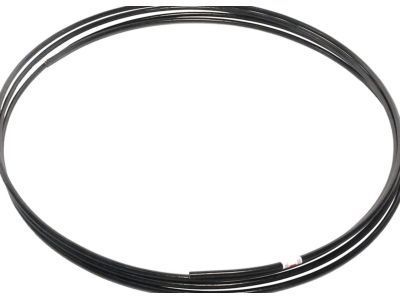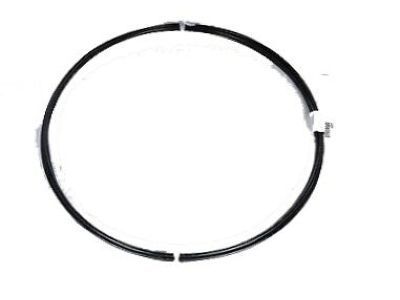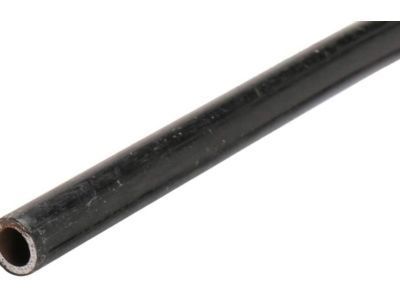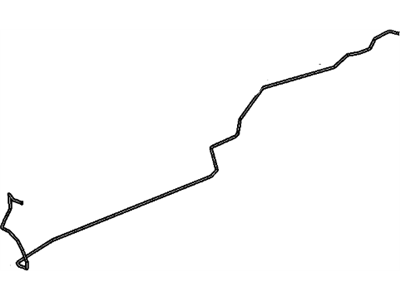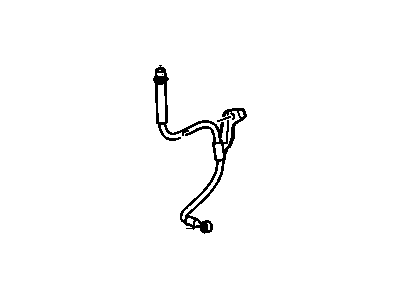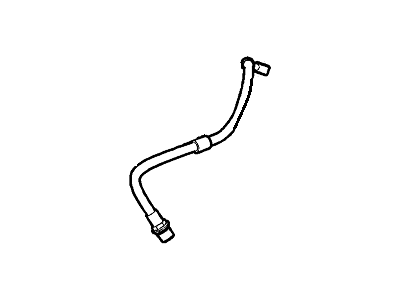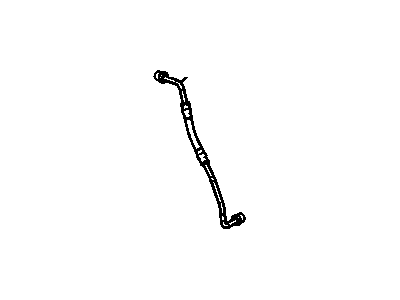
My Garage
My Account
Cart
Genuine Saturn Vue Brake Line
Brake Hose- Select Vehicle by Model
- Select Vehicle by VIN
Select Vehicle by Model
orMake
Model
Year
Select Vehicle by VIN
For the most accurate results, select vehicle by your VIN (Vehicle Identification Number).
35 Brake Lines found
Saturn Vue Pipe Asm,Brake (Steel)(1/4" X 16 Ft Roll)
Part Number: 88936298$91.98 MSRP: $180.88You Save: $88.90 (50%)Ships in 1-2 Business DaysSaturn Vue Pipe,Brake
Part Number: 88983905$68.37 MSRP: $134.44You Save: $66.07 (50%)Ships in 1-3 Business DaysSaturn Vue Hose,Front Brake
Part Number: 20925202$44.54 MSRP: $84.04You Save: $39.50 (47%)Ships in 1-3 Business DaysSaturn Vue Hose,Front Brake
Part Number: 20925203$47.99 MSRP: $87.26You Save: $39.27 (45%)Ships in 1-3 Business DaysSaturn Vue Hose,Rear Brake
Part Number: 96625922$26.44 MSRP: $48.09You Save: $21.65 (46%)Ships in 1-2 Business DaysSaturn Vue Hose Assembly, Front Brake
Part Number: 22706714$46.47 MSRP: $87.68You Save: $41.21 (47%)Ships in 1-2 Business DaysSaturn Vue Hose,Rear Brake
Part Number: 96625921$25.74 MSRP: $46.81You Save: $21.07 (46%)Ships in 1-2 Business DaysSaturn Vue Hose Assembly, Front Brake
Part Number: 22667534$24.04 MSRP: $49.06You Save: $25.02 (51%)Ships in 1-2 Business DaysSaturn Vue Pipe Assembly, Rear Brake Combination Valve
Part Number: 15908051$5.49 MSRP: $61.19You Save: $55.70 (92%)Ships in 1-2 Business DaysSaturn Vue Pipe Assembly, Brake
Part Number: 15884810$72.25 MSRP: $478.35You Save: $406.10 (85%)Ships in 1-2 Business DaysSaturn Vue Pipe Assembly, Brake Pressure Mod Valve Rear
Part Number: 21991347$10.45 MSRP: $30.46You Save: $20.01 (66%)Ships in 1-2 Business Days
| Page 1 of 2 |Next >
1-20 of 35 Results
Saturn Vue Brake Line
The brake line in Saturn Vue automotive has the crucial responsibility of providing brake fluid that is coming from master cylinder to the brake caliper pistons to allow the hydraulic braking system to work. This system is very important to enable the car to be able to stop or decelerate, particularly on application of the brake pedal. In the course of its modeling, the Saturn Vue has employed different forms of Brake Line such as the metallic brake line and the rubber brake line. Steel brake lines can easily rust and get damaged by debris in the road and on the other hand rubber hoses can have cracks and have internal damage due to the age and improper fitting. For improved performance users are advised to switch to braided stainless steel Brake Lines because they offer a better feel and sensitivity, especially if you're into spirited driving. Other kits that apply to prebent brake line are produced from corrosion stainless steel and are easy to replace in Saturn Vue cars with proper bends for the brakes.
Each OEM Saturn Vue Brake Line we offer is competitively priced and comes with the assurance of the manufacturer's warranty for the part. Furthermore, we guarantee the speedy delivery of your orders right to your doorstep. Our hassle-free return policy is also in place for your peace of mind.
Saturn Vue Brake Line Parts Questions & Experts Answers
- Q: How often should you inspect the flexible hoses connecting the steel brake lines to the brake assemblies on Saturn Vue?A:Every six months, after the vehicle has been raised and support on stands, flex hoses, interconnecting steel brake lines to the forward and rearward brake assemblies, should be examined for cracks, chafing, leaks, blisters and the likes because they are parts of the brake assembly which require a thorough examination with the help of a light and mirror. If you, find any defects replace the hose with a new one. First remove the dirt on the hose ends, then disconnect the brake hose from the brake line, this is done by use of a flare nut wrench to remove the metal tube nut, then unclASP the U clip on the female end at the bracket and finally remove the hose from the bracket. Subsequent to this remove the hose from the caliper, discard the sealing washers of the fitting on both sides and connect the new brake hose to the caliper or the Wheel Cylinder using the new sealing washer. To replace the hose for the metal line, feed through the frame bracket and make sure the hose is straight before threading the tube nut and installing the u-clip to the frame bracket. Check to make sure that no parts of the suspension or steering get to touch the hose ensuring that an assistant steps on the vehicle's accelerator and rotate the steering from lock to lock during inspection. When replacing brake lines, use correct model part, do not use copper tubing, to get steel brake lines, approach a dealer or auto parts store. Ready-made brake lines with flare for tube ends and fittings are also given and can be formed to the right shape by a tubing bender. It is also good to make sure that the new line is adequately spaced from many possible sources of interference or heat-generating devices. After installation master cylinder, check the master cylinder fluid level and fixed corrosion protection and add fluid, bleed Brake system before test the brake system with careful manner to safe braking system.
